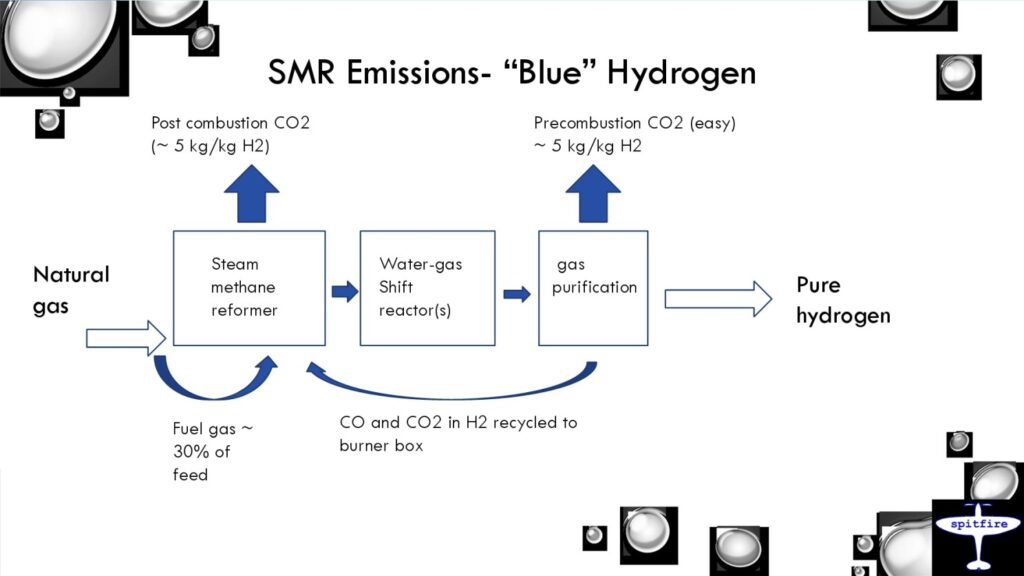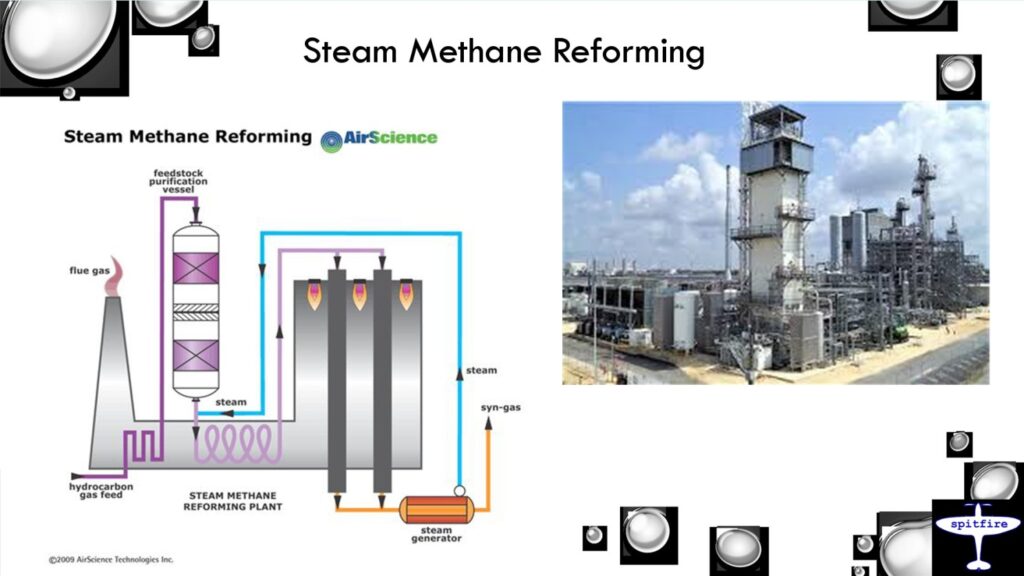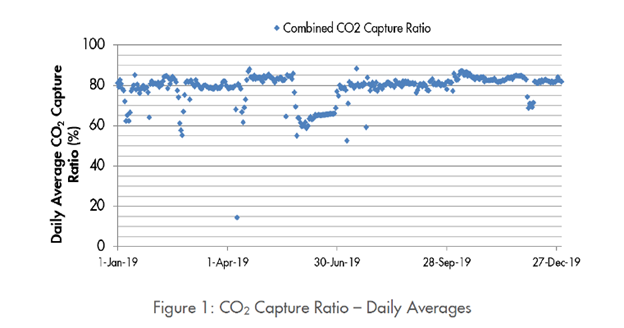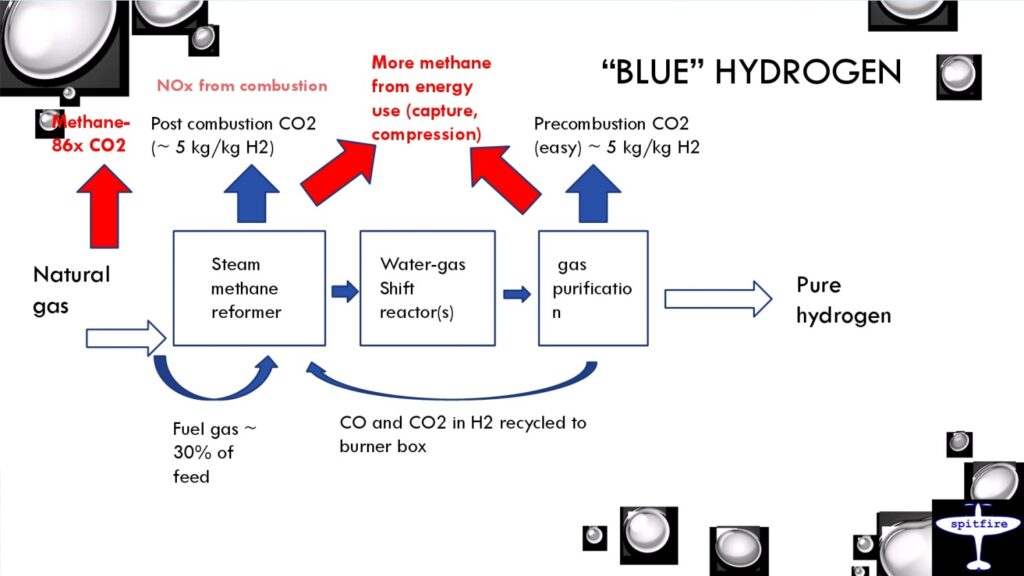
My readers will know that I have never liked the “colours of hydrogen” that has been spread, as a meme, by the hydrogen-as-a-fuel lobby.
There is only really one kind of hydrogen in the world right now.
Hydrogen- 98.7% of it by generous estimate- is made from fossils, without meaningful carbon capture. It is barest minimum 30% blacker, per joule, in CO2 and methane emissions, than the source fuel it was made from. 30% is a best case figure, corresponding to about 10 kg of fossil CO2 emitted per kg of hydrogen you produce, corresponding to a 70% lower heating value (LHV) efficiency of converting natural gas LHV to hydrogen LHV. Start with lignite (brown coal) and it can be much worse- 30 kg CO2 per kg H2.
By definition, that’s not brown, or gray. That’s black. In fact, it’s ultra-black. It’s black-hole black.
We make up for that by not wasting hydrogen as a fuel, of course. Very little hydrogen is wasted as a fuel today. It is made, and used, as a chemical- sometimes to desulphurize or deoxygenate other fuels, and sometimes as a component in making molecules like methanol which are sometimes used as or to make fuels (i.e. Biodiesel).
I love memes- they can be an extremely effective communication tool, and as my friend Alex Grant says, “money follows memes”- people invest in mematic ideas, sometimes for good, sometimes carelessly, and often using taxpayer money.
When people use memes, especially when they use them carelessly or illegitimately, it’s fun to riff on them, as I’ve done with my headline. Sometimes it is a very useful way to get the opposing point of view across.
The hydrogen-as-a-fuel lobby have a pretty colour euphemism for another way to make hydrogen. If you make it from a fossil energy resource, but capture (some of) the CO2 released and dispose of it in some durable way, they call that “blue” hydrogen. And remember what “blue” hydrogen is, after all: it’s the last grand scam of the fossil fuel industry. It’s the only way the fossil fuel industry can pretend to have a future in the energy system post-decarbonization, aside from as a materials and chemicals supplier (about 15-25% of their current business value). Not a happy prospect, if you’re in that business, seeing your revenue shrink by 75-85%! So, any port in a storm as they say, and “blue hydrogen” to the rescue! Since carbon capture at every point source user of fossil fuels- or even at a multitude of the larger ones- is an economic and practical absurdity, the simpleminded idea is as follows:
- convert natural gas to hydrogen centrally
- capture the CO2, disposing of it (hopefully by enhanced oil recovery so we get paid twice)
- sell hydrogen as a fuel
- party like it’s 1989, before we really thought AGW was worth bothering with really
https://www.linkedin.com/embeds/publishingEmbed.html?articleId=8557839304660828877&li_theme=light
So- is it a go? How “green” IS blue hydrogen?
That question was famously asked by Drs. Howarth and Jacobson in their delightfully sh*t-disturbing 2021 paper in Energy Science &Engineering (12 Aug 2021) https://onlinelibrary.wiley.com/doi/full/10.1002/ese3.956
Truly rare for an academic paper, this one had the heads of certain “hydrogen is fossil fuel’s great salvation” advocates, spinning like that of the child in the Exorcist…
(warning: language and religion are both scary…)
But I’m asking a more finessed version of the same question: how blue is blue hydrogen? How blue can it really ever be? And the way I’m going to do that is a little different than what Bob and Mark did in their paper. I’m going to look at a “real”-ish “blue hydrogen” project. Not a pilot project- one done at considerable scale, which buries 1 million tonnes per year of CO2 and doesn’t try to pretend that using CO2 for enhanced oil recovery is real carbon storage, either- that’s the #1 play in the fossil fuel playbook where CCS is concerned.
And there is one to look at, but only one in the whole world. Here it is:
Quest, originally built by Shell, largely (or perhaps entirely) using money from the Canadian Federal and Alberta provincial governments, is a carbon capture and storage project on the Scotford Upgrader. Hydrogen, made by the conventional method by which most hydrogen is made in the world today (steam methane reforming (SMR)), is used to desulphurize and partially upgrade bitumen (aka “tar sands” heavy oil), for sale into the (largely USA) fossil transport fuels market. That’s a use we hope sincerely won’t be needed soon, because we need to stop burning fossils as fuels in a decarbonized future.
The great thing about Quest is that because it was largely (nearly completely) publicly funded, its data is available as a precondition of public money being spent on the project. So all you non-Canadians, please feel free to send cheques to us for all the learnings we funded on your behalf…I’ll be setting up the GoFundMe page shortly! (grin!)
Let’s look at a simplified flowsheet of a SMR so we can understand what Quest does, and doesn’t do.

The Steam Methane Reformer, Redux -(C) Spitfire Research Inc. 2021
A steam methane reformer takes natural gas (mostly methane), purifies it, mixes it with steam, preheats it, then sends it to a number of reformer tubes in parallel, suspended in a tube furnace. Each tube is filled with solid catalyst and is heated on the outside using flue gas produced by burning a mixture of fuel gas, heating the tubes to a very high temperature (well above 800 C). The reforming catalyst allows methane to react with water to form a synthesis gas mixture consisting of carbon monoxide, carbon dioxide, unreacted water vapour, a little unreacted methane, and hydrogen. The overall reactions are endothermic, i.e. requiring heat input, and that heat is supplied by the burning of fuel gas outside the tubes. That means ultimately we have to feed at least 30% of the energy we get out of the product hydrogen, into the tube furnace to supply it with heat to drive those reactions.
CH4 + H2O + heat <==> CO + CO2 + H2 with proportions depending on conditions

(image credit: Air Science Technologies Inc.)
If we want syngas, we’re done- we can separate out the water and maybe the CO2 and feed the gas on to do something useful such as making methanol or reducing iron ore to iron metal (called direct iron reduction or DRI). But we want hydrogen, so the next thing we do is cool down the hot gas in a heat recovery steam generator (HRSG) which produces the steam we need to feed the process plus perhaps a little excess. We then feed the cooled syngas mixture to one or more water-gas shift reactors. These perform the magical water-gas shift (WGS) reaction:
CO + H2O <==> CO2 + H2 + heat
…which, because it produces heat, generates more H2 the colder we run the reaction. Sometimes two steps of WGS with heat removal between them, is done. We’re now left with a stream which consists of H2, CO2, some water vapour, a little unreacted CO, and some unreacted methane, all under some pressure (about 30 bar or so).
Since we want H2, we need to remove the CO2. And here, Shell Quest becomes relevant.
In a normal SMR, the captured CO2 is usually just vented to the atmosphere because that’s the very cheapest thing we can do with it. And let’s face it, CO2 is not a commercial product, it’s a low Gibbs free energy waste molecule, valuable as a product of energy-producing reactions like combustion principally because, until recently, it was easy and cheap to dump it to the atmosphere.
Instead, Quest captures the CO2 using conventional amine absorber/stripper technology (something routinely used in chemical engineering, done at giant scale even before AGW was a “thing”). It generates a nearly pure CO2 stream which it then compresses, dries and dumps into a pipeline for disposal in a nearly perfect disposal reservoir, 2 km underground, some 60 km away from the plant. The absorber takes some pumping energy, and the stripping step takes some heat, at a reasonably high temperature, and CO2 compression takes (considerable) electricity, so we have to find that energy somewhere. We might get some from waste heat from the SMR by heat recovery, but that heat could generally be used elsewhere in the upgrader so it’s not really “free”.
…but even then, we’re not done. We still have CO, some CO2, and some unreacted methane to contend with. Generally, a pressure swing adsorption (PSA) system is used to capture and remove these contaminants. The PSA adsorbs the contaminants at pressure onto a solid adsorbent, which is then periodically depressurized to vent off a gas mixture which is, sadly, mostly hydrogen contaminated with these left-over materials. No matter, as we have a huge, hungry firebox ready to soak up all that otherwise wasted energy- the PSA’s tail gas is sent back to the tube furnace for combustion, and all the CO and CO2 leaves the flue as CO2.
Shell Quest captures about 80% of the CO2 in the syngas stream. That results in about 45% capture of the CO2 from hydrogen production at the plant, per the government website. That also means that only about 56% of the CO2 emitted by hydrogen production in the Quest SMRs is available for capture in the syngas. The other 44% comes mostly out that tube furnace flue, at atmospheric pressure, in a giant swamp of nitrogen and water vapour (some of it also comes out of a natural gas power plant somewhere). The low partial pressure (total pressure times % CO2 in the stream) means there’s a higher entropic hill to climb to capture that CO2, and that costs us energy; such a high hill in fact that it is no easier to capture the CO2 from the tube furnace flue than it would be to just skip hydrogen-as-a-fuel entirely, burn ALL the methane in, say, a gas turbine power plant, and capture the CO2 from its flue. So Quest, wisely, doesn’t even try. It makes itself quite satisfied with capturing 80% of 56%, i.e. 45% of the CO2. The easy 45%. And it does this pretty consistently, except when it doesn’t. Then, it just vents the CO2, like every other SMR on earth.

Source: Government of Alberta website, Shell Quest capture figures, 2019
(note: this 80% of the CO2 in the syngas is only 45% of the CO2 produced by the SMR unit)
Quest has been in operation for over six years, since we generous Canadians built it. And in each of those years, it has captured about 1 million tonnes of CO2 and buried it deep down from whence it will hopefully never return.
Of course Shell, on its various websites, crows about how wonderful this all is- how it’s equivalent to the emissions of about 1.25 million cars each year etc. etc. Why shouldn’t they crow? They’re not paying for it- we Canadian taxpayers are!
Cost and Schedule
How much does all this cost? And how long did it take?
Engineering started in 2009, and the CCS system was operational in 2015. Not quick…but it worked, so I guess Fluor did a good job!
The financial figures are a bit muddier. While the public money dumped into the project is very clear- $120 million from Canada and $745 million from Alberta (all Canadian dollars), the NRCan website talks about “total project costs” of $1.31 billion. The operating costs are on the order of $50 million per year, and the project life is 20 yrs, so the $1.31 billion figure isn’t the “total project cost” including operation and maintenance. The actual total capital cost is actually quite unclear. Shell itself provides no other figures that I can find easily.
But frankly it doesn’t matter that much to me. What’s half a billion between friends? Here’s why: let’s assume it cost “only” the public $845 million and neither Shell nor anybody else put a cent into it. Let’s assume, for fun, that capital is “free”, so we don’t have to argue about discounting rates. And let’s assume a steady $50 million a year, and the 20 yr operating life. Let’s ignore inflation, like we all did until recently… Roll that together at an average of 1 million tonnes per year of CO2 captured and buried, and we get ~ $92/tonne of CO2. Sounds great, right? Canada’s carbon tax is heading to $170/tonne by 2030- very soon the project will be self-funding! Shell further crows on its 5th anniversary of Quest website, that capital costs would drop by 30% next time.
Sadly, we’ve forgotten or ignored a few things. Isn’t that how my papers usually go? It looks so simple, until we get into the nasty details?!
Here’s a better, more accurate version of that first slide I showed you- it represents what’s really going on in an SMR with or without carbon capture.

Methane Leakage
For every kg of H2 we get out of Quest, by my estimates (based on a Shell presentation whose slides I do not have permission to share with you), we need to feed about 47.5 kWh of methane LHV to the SMR itself. That would, at world average methane leakage rates of 1.5%, result in about 0.055 kg of methane being leaked for every kg of H2 being produced at Quest. Before abatement, Quest generates about 9.7 kg of CO2 per kg of H2 produced, round numbers. Add 0.055 kg of methane at the 20 yr, 84x global warming potential of methane per the IPCC, we’re looking at unabated emissions of 9.7 (direct) plus 4.5 (methane) = 14.2 kg of CO2e per kg of H2, before we do any CCS. Ignoring the methane leakage makes the CO2e emissions look much nicer, doesn’t it?!
Of course if you’re a fossil fuel apologist, you’ll use the 30x CO2 GWP figure for methane from IPCC instead, and knock that 4.5 extra kg of CO2e/kg H2 down to 1.7 kg- only about 18% of the gross CO2 emissions, so not that bad. But remember- we’re considering H2 production from fossils with CCS to be a transitional strategy, because we all know it’s second (or third, or fifth…) best relative to GREEN hydrogen made by electrolysis of water using pure renewable electricity. You can, as some Exorcist head-spinners have done, write off Howarth and Jacobson’s paper (and my analysis) as mere hyperbole because we take the hydrogen-as-a-fuel lobby at its word about “blue” hydrogen being a stop-gap measure. Frankly, anybody using the 100 yr GWP for methane needs a smack upside the head- forgive me, that’s just me being ornery because I’m writing about this, rather than relaxing with a glass of bourbon watching Netflix.
CCS Energy Consumption
Per the public reports,
https://www.linkedin.com/embeds/publishingEmbed.html?articleId=8774390181467328053&li_theme=light
…the CCS system on Quest takes 0.65 MJ of electricity and 2.1 MJ of heat per kg of CO2 captured. Most of the electricity (0.55 of 0.65) is used to run the compressors. The plant also consumes 10 T/month of amine and 1 T/month of triethylene glycol used for dehydration. Forgetting about the reagents and focusing only on the energy inputs, we discover how much it takes to capture 80% of the CO2 in the syngas, which remember is only 45% of the CO2 emitted by the SMR. Taking the (unabated, post combustion) CO2 emissions of that energy into account, but again forgetting about the methane leakage, the net capture of CO2 by Quest drops from 45%, to 35%. Just capturing the easy 45% of emissions, requires 10/35 = about 1/3 more CO2 to be emitted, in a form which is post combustion and hence uneconomical to capture.

“Blue” H2 by SMR, not quite so “redux”- (C) 2021, Spitfire Research
Witnesseth that CCS, even from a high partial pressure stream, takes sh*tloads of energy. Imagine the illegitimi, talking about doing this from 416 ppm CO2 in the atmosphere with direct air capture…
Add in the methane emissions associated with that CCS energy- another 0.44 kg CO2e (20 yr basis) on top of the 0.96 kg (direct) CO2 emissions unabated to run CCS, and Quest’s capture drops to about 21% in net CO2e terms.
$0.85 to $1.3 billion, plus $50 million per year, to capture 21% of net CO2e emissions from hydrogen production.
I’m calling that rather blackish-blue, bruise coloured hydrogen at very best. Because that’s what Quest really produces.
It’s also no model, whatsoever, for the use of fossil hydrogen, especially as a fuel, in a decarbonized future.
What Else Could We Do?
Aside from the obvious, i.e. make green hydrogen from renewable electricity and water, to replace all that black hydrogen we’ll need post-decarbonization?
You may have read previously that my former client Monolith Materials is doing an exciting project in Nebraska and has received a tentative offer of $1 billion USD in loans from USDOE to expand the project to full commercial scale. The project takes natural gas, or perhaps biogas methane (future plans), and converts it using electricity from a disused nuclear power plant (with future wind/solar plans) to pyrolyze it into carbon black and hydrogen. Carbon black is a valuable product itself, made normally from heavy oil by a filthy, emissive partial combustion process. They are making the hydrogen into ammonia, to serve the ~40% of US ammonia consumers who are within 100 miles radius of their plant.
A brilliant project, of great decarbonization benefit- but sadly, not scaleable to ever be a major source of hydrogen in terms of world H2 consumption. Replacing the 90 million tonnes of H2 we’ll need post decarbonization, at least initially, by such a process, would make 270 million tonnes of carbon- more than 10x the world market for both carbon black and graphite combined. While some are betting that throwing away 1/2 the energy and 3/4 of the mass of the feedstock will be paid for by the greater ease with which carbon may be buried relative to burying CO2, the jury’s still out on that. This process has the euphemistic tag of “turquoise hydrogen”. How black that turquoise is, depends on many very project-specific factors including methane leakage and the carbon intensity of the electricity used to run pyrolysis.
We could also switch from SMR to another process- oxy-blown autothermal reforming. That process is commercial already, being used in methanol and Fischer-Tropsch plants to make high CO:H2 syngas mixtures. It is less efficient than SMR if the target is pure hydrogen, but (nearly) all the CO2 ends up at high partial pressure in the syngas stream, making higher % captures much easier than with SMR. I will write about this in part 2.
We could also use electric heating, or burn product hydrogen, in the tube furnace of the SMR. The former, called E-SMR, is already under development by several companies, but again has limitations to the ultimate CO2e achievable due to methane leakage and CO2 generated from gas purification. The latter is just a way to burn up money in my opinion.
Finally, I will leave you with the single most authoritative, comprehensive and accurate review of the objectives, practicality and real motivations of carbon capture and storage that I’ve seen. Warning, it may make you laugh, and then cry, and the language might make even a sailor blush a bit.
Disclaimer: I’m human, and hence can easily misinterpret things, make mistakes, push the wrong button on my calculator etc. If you find errors in what I’ve written, and can show me with references or calculations where I’ve gone wrong, I will correct the text with gratitude.
If you can’t find anything wrong with what I’ve said other than that it makes you unhappy, or worried about your continued employment, then perhaps you need to reconsider things a bit. If it makes you angry enough to yell at my employer, Spitfire encourages you to try!
Part 2: the Ghost of Blue Hydrogen’s Future
